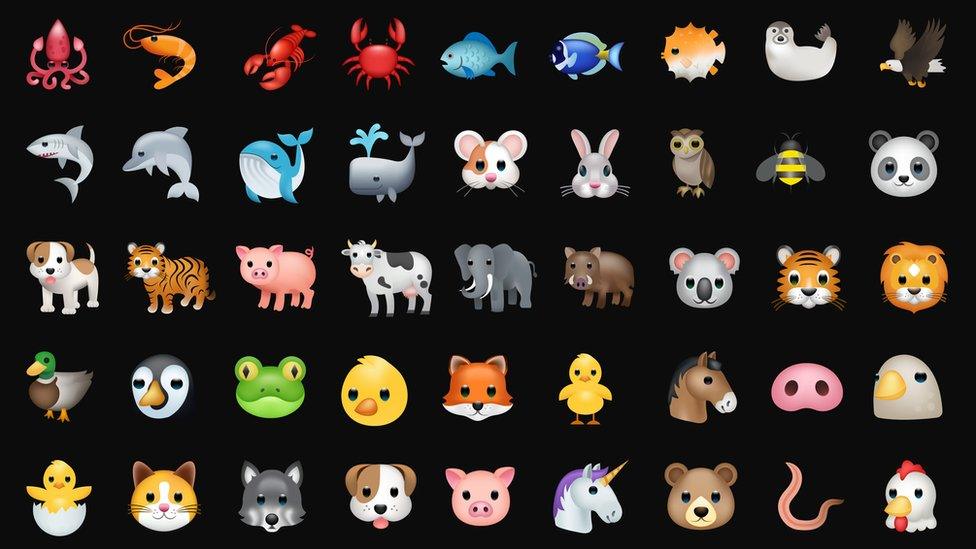Emojis: Call for more animals and plants to be represented
- Published
- comments

Which plant or animal emoji would you like to add?
If you could create a new emoji for any plant or animal, what one would you choose?
Earth scientists are calling for a wider range of animal and plant emojis to better reflect the breadth of biodiversity on Earth.
They say while current emojis represent a fairly wide range of animals - there aren't that many plants, fungi or microorganisms.
Biologists from the University of Milan who carried out the research said that as emojis now form such a key part of our modern use of text language, a more varied number to choose from could help conversations around biodiversity and conservation.
They published their research in the journal iScience, saying: "In our increasingly digitised society, we should not underestimate the potential of emojis to raise awareness and foster appreciation for the diversity of life on Earth."
The team analysed emojis related to nature and animals in Emojipedia, an online catalogue of emojis which is used by most phone apps.
The researchers wanted to see a much wider range of plant emojis on offer
It is updated regularly, for example to add more human skin colours.
The team tracked the changes between 2015 and 2022, to work out how emojis had changed in this period and to see whether the library has been growing to better represent biodiversity in the real world.
They found that compared to 2015, the number of animal icons has more than doubled.
What is the problem with the current emojis?
After dividing every emoji related to nature and animals into a specific category, the researchers found that there are a total of 112 emojis of distinct organisms - 92 showing animals, 16 showing plants, one fungus, and one microorganism.
They concluded that within the animal kingdom, vertebrates - that's animals that have a backbone - were overrepresented, while arthropods - like insects, spiders, prawns and crabs - were underrepresented in relation to how many there were in the natural world.
Only 16% are arthropods (like insects and crustaceans), just 4% are molluscs, 2% are cnidarians (underwater creatures like jellyfish and coral), and 1% are annelids (such as worms and leeches).
Annelids weren't represented at all until 2020's addition of a generic worm, and there are still no emojis representing round or flatworms (nematodes and platyhelminths).
What do you think should be added to the range of sea creatures on offer - or do you think there are enough emojis already?
Cnidarians got their first emoji a year later, with a piece of coral.
There were also big differences in how much attention certain animals were given.
While we get multiple colours of bear to choose from, and a specifically bald eagle, other creatures like ants or crocodiles are only identifiable on a much broader level, by a single emoji.
Researchers said the divide was "problematic", though noted emoji biodiversity did appear to be increasing.
They have said an ever-updating catalogue would help people "discuss a range of biodiversity-related topics and sentiments more effectively, beyond the icons depicting iconic species".
What new animal or plant emojis would you like to see? Let us know in the comments.
- Published29 November 2023
- Published30 March 2023
- Published28 September 2023
